After breakfast at our private dar (it appears we are the only guests of the entire 3-storey, 4-bedroom dar), we caught a louage one hour south to Tunisia's most visited site: The amphitheater of El Jem.
The Amphitheater of El Jem is simply astonishing. Built in the 2nd century AD, it's the largest Roman building still standing in Africa, and the third largest Roman amphitheater on earth, after Rome's Colosseum and the Capua Amphitheater in Catania, Sicily. But unlike the great Roman ruins of Italy, the Amphitheater of El Jem is...utterly empty.
The Amphitheater of El Jem sits, quite nonchalantly, at the end of the El Jem's main street. In fact, if you weren't visiting this small town specifically to see this ancient wonder, you might be surprised to see this hulking amphitheater in the midst of an ordinary, tiny Tunisian town.
El Jem's amphitheater is stunning for many reasons, the most obvious being its sheer size. At its peak, it held 30,000 to 50,000 spectators, and rose to a level of 40 meters (120 feet) with three levels of seating, each level containing thirty arches. Only two-thirds of the outer wall and arches remain, but that doesn't make it any less ginormous.
Unlike Rome's Colosseum, with its hordes of tour groups and pre-reserved ticketing system, El Jem is utterly devoid of tourists. During the current high season, we saw maybe twenty other tourists the entire afternoon. And because there are so few visitors, we were allowed to walk everywhere, including the arched hallways, the amphitheater seating, the floor of the arena itself, and the underground tunnels where tigers and other wild animals were caged alongside gladiators and prisoners before their bloody battles.
Walking these tunnels, it was impossible not to think: What must those condemned prisoners have been feeling as they walked through these tunnels to the arena, to certain death by tiger mauling? While thousands of spectators gleefully watch?
Matt, on the other hand, wondered if it was OK to run out into the empty arena and yell "ARE YOU NOT ENTERTAINED?" (apparently this is a "Gladiator" film reference. The movie was filmed elsewhere, but its arena was based on El Jem's.) (And yes, I felt this to be perfectly acceptable,)
It took about 45 minutes to walk through the entire amphitheater and take photos. But our interest in El Jem's Roman history was piqued enough to make the fifteen-minute walk across town to see El Jem's Archaeological Museum (also, the museum entrance was included in our 12 dinar/€4 amphitheater ticket, and the Joneses do require full monetization of one's admission).
We weren't expecting much, but to our surprise we found a lovely Tunisian home, with airy arcades and rooms, filled with mosaics from the town's excavations- even with English explanations. The back of the museum was the "Africa House" excavation, fully in situ. Rather than digging up artifacts and presenting them in a museum setting, instead the house and small town beyond it was left as-is, so visitors can walk the "streets" and fully experience the ancient town's layout. I loved it.
We intended to view another in situ Roman home excavation, but I got distracted by a Tunisian patisserie and we completely forgot. In my defense, NUTELLA BAKLAVA.
After our explorations, we stopped for a mint tea at a small café. The café was located directly behind the Amphitheater, so I can confidently say that it was the finest view I've ever had with my tea. (The few local men drinking tea in the café could not have cared less, however; it's just another day in a small town, I suppose).
We took a louage back to Sousse, and spent the remainder of the evening on our dar's rooftop, reading and drinking Tunisian wine.
Side note: While Tunisia has pretty good rosé wine, I cannot say the same for its whites. Just saying.

 El Jem, Mahdia Governorate, Tunisia
El Jem, Mahdia Governorate, Tunisia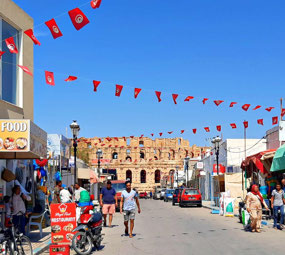
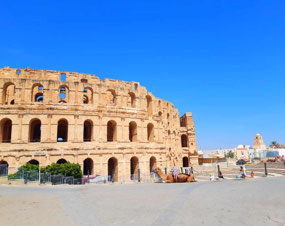
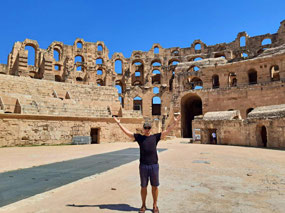

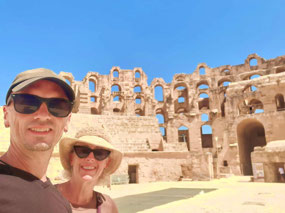

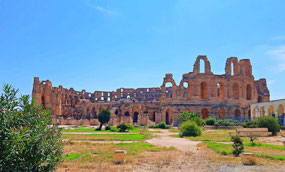
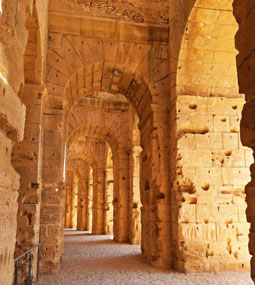
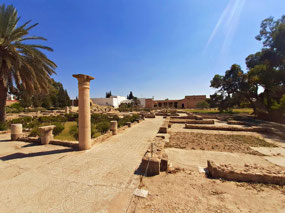
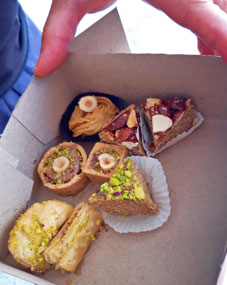
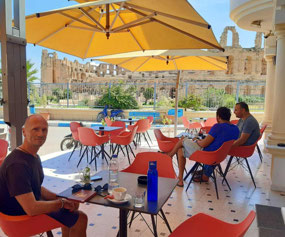

2025-05-22